Search results
Finding Your Ancestors in Trades Union Records
August 23, 2012 by ramona
Filed under Articles, Genealogy Occupational Records, Genealogy Records 101, Latest News
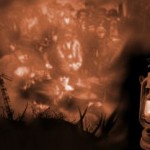 One of the very first things you learn as a genealogy beginner is to look in birth, marriage, death and census records for clues to uncovering your ancestral past. Then you learn about land records, sasines and other records associated with genealogy.
One of the very first things you learn as a genealogy beginner is to look in birth, marriage, death and census records for clues to uncovering your ancestral past. Then you learn about land records, sasines and other records associated with genealogy.
One often overlooked source of information for your family tree are trades union records.
The trade your ancestor worked in may hold valuable information. For example, the record of a tradesman can help you find an ancestor who has disappeared from the record or help you fill in the blanks of, where, when and why they changed locations between census. Quite often trades ran in families and you may even find generations of records if you are lucky.
For family history hunters with ancestors from the UK one record source you may want to track down is The Modern Records Centre. This unique resource is not genealogy specific nevertheless; they do have a number of collections that are genealogy gold.
The Modern Records Centre collection includes information on UK trade union employers that work as guide to help find specific records for individuals.
Some of the trades they cover include:
Blacksmiths, Forge & Smithy Workers
The Scottish United Operative Blacksmiths’ Protective and Friendly Society was recognized on 24 August 1857: records held in this collection are general registration books, 1857-1924. These records hold information on individuals however to find an individual you will need either their membership number or the year they joined the union. Another great resource in this collection is the monthly, quarterly and annual/financial reports (1858-1961). This set of records includes lists of deceased members and their spouses.
Joiners
The Amalgamated Society of Carpenters and Joiners/Amalgamated Society of Woodworkers hold membership records in three series. To find information on individual members you will need to know the branch to which your ancestor belonged.
· What the collection contains and what you can hope to find:
· Admission books (1895-1931): Your ancestors name, age when admitted, number of years in the trade, the date he was admitted, his marital status, if he recieved funeral benefits, excluded members and if he was transferred between branches.
· Registration books (1901-1921): Some of the information included are name, age when admitted, date admitted, marital status, date of marriage and name of branch, any benefits received and date of death or exclusion from the union.
· Reference books (1901-1921): The reference books contain lists of members in 1901, 1911 and 1921 that had transferred in another place.
· Annual reports (1920-1971): The most interesting thing about the Annual reports is that they contain obituaries of several members.
Railwaymen
There are several unions for railwaymen with records dating from so it will be very helpful to know exactly which union your ancestor was a member of. In spite of this, the collection has some of the richest genealogical holdings.
Annual reports of the Orphans Fund (1889, 1893-1912):
These records hold the details of payments made to the children of deceased members. To research the collection you will need to know the year(s) benefit were granted.
Record of accidents, inquests, Board of Trade enquiries, and legal cases (1901-1907):
This collection is indexed by branch and arranged in chronological order. It contains information on accidents and inquests and can tell you the date ,place and nature of an accident along with whether or not any compensation was paid or the outcome of an inquest. Researchers will need to know an approximate date of accident as well as the member’s branch.
The Modern Records Centre also holds union records for Boilermakers, Bookbinders, Bricklayers, Gilders, Ironfounders, Papermakers, Printing Workers, Quarrymen, Seamen, Shipwrights & Shipbuilders, Stonemasons and Telegraphists among many others.
Before you head off to research your ancestors trades take advantage of genealogybeginner.com’s 30-day free trial membership and download your Family Tree Charts and Research Tracking Forms today.
A Family History of Chivalry
August 20, 2012 by ramona
Filed under Articles, Family History, Latest News
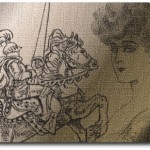 One of the most enjoyable things about researching your family history is learning about some lesser-known historical facts. This can be even more exciting when you discover that your ancestors had a part to play.
One of the most enjoyable things about researching your family history is learning about some lesser-known historical facts. This can be even more exciting when you discover that your ancestors had a part to play.
For example, it can be a thrilling moment when you discover that there was a knight in your family tree.
It can be a bit of a surprise if you find out that the knight was a woman.
During the middle ages, there were several orders of knighthood for women such as:
The Order of the Hatchet
Founded by the Count of Barcellona in 1149, The Order of the Hatchet honored the women who fought against the Moors in defense of the town of Tortosa. The Order granted the lady knights precedence over men at public assembly as well as an exemption from taxes.
The Order of the Glorious Saint Mary
Loderigo d’Andalo, an Italian nobleman from the town of Bologna founded The Order of the Glorious Saint Mary in 1233. Later approved by Pope Alexander IV in 1261, this was the first of the religious orders of knighthood granted to women.
The Order of the Garter
The Order of the Garter was granted to 68 women between the years 1358 and 1488. Many of the women appointed to this order were wives of knights of the order or those of noble blood: although, there were members who were neither. A symbol of the Knights of the Garter is a garter worn upon the left arm; many such are seen on the headstones of those inducted into the order.
The term for a woman who has been knighted is “Dame”.
If you find this title associated with one of your ancestors it will be because she belonged to an order of chivalry. Often these titles are only held for life and are not hereditary.
To learn more about medieval genealogy visit The Foundation for Medieval Genealogy but first remember to download your Family Tree Chart available with your 30-day free trial to Genealogy Beginner
New Family Tree Site Offers a Great Deal
August 19, 2012 by ramona
Filed under Articles, General Tips, Latest News
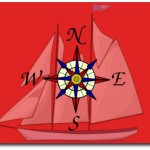 Genealogy beginners in the US will be happy to learn that findmypast has launched a new search site tailored to family history hunters across the pond.
Genealogy beginners in the US will be happy to learn that findmypast has launched a new search site tailored to family history hunters across the pond.
The new site titled findmypast.com is geared towards helping the descendants of UK immigrants conduct family tree research with records specifically tailored for US Family History researchers.
The records can be searched by:
- Census, Land and Substitutes
- Churches and Religion
- Education and work
- Immigration and Travel
- Institutes and Organizations
- Military Service and Conflict
- Newspapers, Directories and Social History
- Vital Records (Birth, Marriage, Death)
In addition to the US records, subscribers will have access to records from the UK, Ireland, Australia and New Zealand.
The best part is that right now findmypast.com is offering a limited time 76% Pioneer discount!
Gaming for Ancestors
August 7, 2012 by ramona
Filed under Articles, Family History, General Tips, Latest News, Preserving Your Family Tree
 If you are looking for a fun and unusual way to record your family tree you might want to consider playing Family Village.
If you are looking for a fun and unusual way to record your family tree you might want to consider playing Family Village.
Family Village is a facebook game that allows family history hunters to build a family tree in game format. The premise of the game is to invite relatives to play and create a database of ancestors along with living family members by entering their information into the game.
How Does this Create a Database of Ancestors?
The game allows you to go on quests and build a village by entering all the usual types of genealogical information about your ancestors such as birth, marriage and death documents and photos. It allows you to enter immigration information, maps and newspaper articles as well as adding occupations. You can even build avatars of your ancestors.
In their vision statement game developer Finium says that their purpose in developing the game is to provide meaningful games that will aid family tree hunters in preserving their family history.
Family Village is a great way to connect with relatives and get the whole family involved in genealogy.
Ships Lists: Free Genealogy Resource
August 5, 2012 by ramona
Filed under Articles, Genealogy Research Resources, Latest News, Sharing Genealogy Information
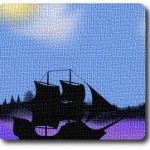 Genealogy beginners looking for immigrant ancestors should head straight over and bookmark The Immigrant Ships Transcribers Guild (ISTG) website.
Genealogy beginners looking for immigrant ancestors should head straight over and bookmark The Immigrant Ships Transcribers Guild (ISTG) website.
The ISTG is a volunteer group that has been working since 1998 to transcribe ships lists on a global scale and publish them on the internet. In the years since its inception, the ISTG website has grown to include volumes of passenger manifests.
The scale of the site may make navigating it a little intimidating to the novice family history hunter. A short tutorial will help make things a little easier.
How to Search the ISTG
Step one:
Locate the search box on the upper left hand corner of the opening page and enter the surname you are researching. This should move you forward to a page with a long list of matches.
Step Two:
On the upper right hand corner of the page, you will find an option for advanced searches…click the option.
The advanced search will give you four text boxes
1. All – will return pages that include all of the terms entered
2. Phrase – will return pages matching the exact phrase
3. Any – will return pages that match any of the terms – in no specific order
4. None – includes other selected items and must be used in tandem with other fields
For example, entering “Alexander McCallum” into the “All” field returns ships named Alexander as well as passengers surnamed Alexander and McCallum.
The same search entered in the “Phrase” field returns only passengers named Alexander McCallum.
In the Any field these search terms return the same results as entering into the “All” field. It is good to use the “None” field in tandem as you can enter terms you do not want matched in order to narrow your search.
Once you are comfortable using the search function you will be free to search some of this sites great free resources from Jacobite rebellion ships to New York arrivals.
One great feature of this site that you will not want to miss is the ISTG compass, which is a tool to simplify your searches by breaking down resources into consumable information bites.
The ISTG is another site that relies heavily on volunteer transcribers, if you would like to help check out their Guild Application for more information.
Make sure you are prepared for your visit to The Immigrant Ships Transcribers Guild with Genealogy Beginners Family Tree Starter Kit, available with your 30-day free membership.
Newest FREE Family Tree Resources
July 21, 2012 by ramona
Filed under Articles, Family Search The LDS, Genealogy Records 101, Latest News
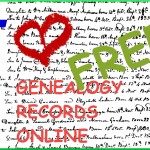 If you have been waiting for new genealogy resources to become available online, your wait may be over. The month of July 2012 saw some great additions to genealogy resources by FamilySearch.
If you have been waiting for new genealogy resources to become available online, your wait may be over. The month of July 2012 saw some great additions to genealogy resources by FamilySearch.
The new additions span the globe from the USA to Asia…some dating from the 1400s.
Keep reading for a complete list of the July’s new records:
| Record For | Record Type | Date Added |
|
United States |
||
| Alabama, Madison County | Chancery and Circuit Court Records, 1847-1950 | 10 Jul 2012 |
| California, San Mateo | County Records, 1856-1991 | 17 Jul 2012 |
| Indiana | Marriages, 1811-1959 | 7 Jul 2012 |
| Maine | State Archive Collections, 1790-1966 | 10 Jul 2012 |
| Missouri, Jackson | County Voter Registration Records, 1928-1956 | 17 Jul 2012 |
| Nevada | County Birth and Death Records, 1871-1992 | 10 Jul 2012 |
| New York, Orange County | Probate records | 10 Jul 2012 |
| Oregon | Douglas County Records, 1852-1952 | 10 Jul 2012 |
| Texas | Deaths, 1977-1986 | 19 Jul 2012 |
| United States | Census, 1940 | 6 Jul 2012 |
| United States | Social Security Death Index | 2 Jul 2012 |
| United States | Civil War Widows and Other Dependents Pension Files | 7 Jul 2012 |
| United States | National Homes for Disabled Volunteer Soldiers, 1866-1938 | 10 Jul 2012 |
| Utah | County Marriages, 1887-1937 | 6 Jul 2012 |
| Utah | Marriages 1887-1966 | 16 Jul 2012 |
|
Canada |
||
| Canada | Census, 1916 | 3 Jul 2012 |
| Nova Scotia | Vital Records, 1763-1957 | 3 Jul 2012 |
| Ontario | Marriages, 1869-1927 | 6 Jul 2012 |
| Quebec | Notarial Records, 1800-1900 | 17 Jul 2012 |
| Saskatchewan | Probate Estate Files 1887-1931 | 6 Jul 2012 |
|
Great Britain |
||
| Scotland | Census, 1881 | 2 Jul 2012 |
| Scotland | Census, 1891 | 2 Jul 2012 |
|
Western Europe |
||
| Italy, L’Aquila, Camarda, Parrocchia di San Giovanni Battista | Catholic Church Records, 1606-1941 | 3 Jul 2012 |
| Italy, Palermo, Diocesi di Monreale | Catholic Church Records, 1531-1998 | 3 Jul 2012 |
| Italy, Trento, Diocesi di Trento, Catholic | Catholic Church Records, 1548-1937 | 21 Jul 2012 |
| Italy, Vicenza, Casoni, Parocchia di San Rocco, | Catholic Church Records, 1597-1937 | 3 Jul 2012 |
| Spain, Province of Sevilla | Municipal Records, 1903-1918 | 10 Jul 2012 |
| Spain, Province of Tarragona | Records of Widows and Orphans of Spanish Officials, 1860-1960 | 10 Jul 2012 |
|
Eastern Europe |
||
| Czech Republic | Censuses, 1843-1921 | 10 Jul 2012 |
| Czech Republic | Land Records, 1450-1889 | 10 Jul 2012 |
| Poland | Roman Catholic Church Books, | 16 Jul 2012 |
| Slovakia | Church and Synagogue Books, 1592-1910 | 19 Jul 2012 |
|
South America |
||
| Chile, Santiago | Collection of Genealogies, 1500-1980 | 11 Jul 2012 |
| Chile, Santiago | Cementerio General, 1821-2011 | 11 Jul 2012 |
| Peru, Lima | Civil Registration, 1874-1996 | 11 Jul 2012 |
| Peru, La Libertad | Civil Registration, 1903-1997 | 2 Jul 2012 |
| Dominican Republic | Civil Registration, 1801-2010 | 11 Jul 2012 |
| Ecuador | Catholic Church Records, 1565-1996 | 2 Jul 2012 |
| Guatemala | Civil Registration, 1877-2008 | 3 Jul 2012 |
| Portugal, Braga | Catholic Church Records 1530-1911 | 11 Jul 2012 |
| Portugal, Castelo Branco | Catholic Church Records | 20 Jul 2012 |
| Portugal, Diocese of Lamego | Catholic Church Records, 1529-1916 | 11 Jul 2012 |
| Portugal, Diocese of Vila Real | Catholic Church Records, 1575-1975 | 11 Jul 2012 |
|
Asia |
||
| Korea | Collection of Genealogies, 1500-2009 | 10 Jul 2012 |
|
South Africa |
||
| South Africa | Free State Dutch Reformed Church Records, 1848-1956 | 19 Jul 2012 |
| South Africa | Orange Free State, Estate Files, 1951-2004 | 11 Jul 2012 |
| South Africa, Western Cape | Various Records | 10 Jul 2012 |
Before you tackle all of these new family history records and break your genealogy brick wall, remember to download your Research tracking forms and Family Tree Charts. Available with your 30-Day FREE TRIAL MEMBERSHIP to Genealogy Beginner
Pinning your Family Tree
July 14, 2012 by ramona
Filed under Articles, Family History, Latest News, Preserving Your Family Tree
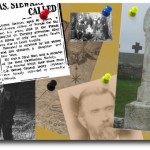 Well it certainly did not take long for family tree fanatics to make use of social media “pinning” sites.
Well it certainly did not take long for family tree fanatics to make use of social media “pinning” sites.
If you are new to social media here is what you need to know about pinning. Pinning is a visual way of sharing your interests via a virtual pin board. You can create boards based on a singular theme such as genealogy, family tree, family history etc. Ultimately, what these sites do is share links through images. One way to think of it is as a visual bookmark.
Pinning for Genealogy
Pintrest
Pintrest can be used as a fantastic tool for organizing your genealogy, sharing resources and following others with like interests. The only catch is that in order to use Pintrest you must first receive an invitation.
Pinspire
If you do not have an invitation to Pintrest, you can try out its identical twin Pinspire. Pinspire is identical to pintrest with one exception…no invitation required.
If you want to check out more pinning sites, Minglewing, Piccsy and Storify are good places to start.
Uencounter.me
The newest kid on the pinning block is Uencounter.me a pinning site with a purpose. Uencounter.me is a mapping site that focuses on letting the user built a visual map of their family tree.
Building a visual map of your ancestors can be a very helpful tool for your family history research. However, the possibilities for information sharing with this type of application are easy to see.
Imagine the map as a resource for finding ancestors by location. Although other search sites come close, if you are not familiar with the geography of the area you are searching… it is easy to become confused and miss something.
For example:
My line of McCallum’s hail from Lanarkshire Scotland can be found in the census at Firth, Carstairs and Carnwath. While that may not mean much on a data screen, having a visual of just how close those communities are, helps give some perspective to your search.
Using Uencounter.me
The process starts by bringing up the map and asking you to zoom into your area of interest. You can also pin a place by adding the address.
Drop down menus let you select:
- Type of Encounter: Genealogy,
- Dates to and from: a date range from the present to the year zero,
- People Here Are / were: ancestors
- This pin relates to: an ancestor
- Specifically: Birth, Marriage, Death, other
For those of you who want to pin live relatives do not worry as the site gives the option for a privacy setting on an individual basis. As you move forward to the next step you will get a pop up box that allows for notes, you can even add photos.
While Uencounter.me shows all the earmarks of a superior genealogy tool, a searchable name function would make this an invaluable free resource for genealogists everywhere.
Need to learn more about finding your ancestors through the geography of genealogy check out Genealogy Beginners lesson on Searching by Place. Available with your 30-day free trial membership.
Genealogy: Online Ethics and Etiquette
July 11, 2012 by ramona
Filed under Articles, Genealogy Standards & Guidelines, Introduction to Genealogy, Latest News
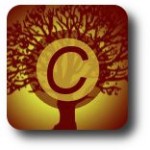 From the novice to the veteran family historian we can all agree that the vast amount of information available online for genealogy research is a great blessing. Therefore, it is more important than ever to become familiar with the ethical practices and etiquette involved in information sharing when it comes to our family trees.
From the novice to the veteran family historian we can all agree that the vast amount of information available online for genealogy research is a great blessing. Therefore, it is more important than ever to become familiar with the ethical practices and etiquette involved in information sharing when it comes to our family trees.
On sites such as Ancestry.com and Find a Grave, a great deal of the information is made available through the contributions of fellow researchers. Thus, it is becoming easier for genealogy beginners to discover documents and photos at the touch of a few keys.
Family Tree Ethics and Etiquette
Published genealogies can be a truly wonderful resource, they aid us in our own research and quite often lead to the discovery of cousins we never knew we had. The down side of this is that through innocent error and sometimes intent, the genealogical community experiences a degree of unethical behavior and bad manners.
It is very exciting to find published information about your ancestors online however, before you snag that birth, marriage, death record or photo of G.G. Grandma:
1. Ask Permission
This is a common scenario on sites like Ancestry.com where photos and records are often public. This is because Ancestry.com is meant to be a collaborative site and although it states in their Community Guidelines that “Any information you post in our community is public and can be copied, modified and distributed by others” you should still ask permission of the original poster.
2. Give Credit
When using published documents or photos always thank the original contributor A little blurb that reads – Photo Courtesy of Ms. Nice Genealogist – is just good manners.
To learn more about this subject check out Genealogy Beginner’s lesson # 1. Genealogy Standards and Guidelines: You Need to Know This First, available with your 30-day free trial membership.
Free Genealogy Translation Services
July 2, 2012 by ramona
Filed under Articles, Genealogy Research Resources, Latest News, Sharing Genealogy Information
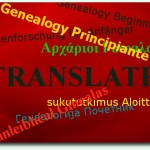 If your ancestors are from Europe, Asia, Russia, South America or another non-English speaking region; you are probably among countless other family tree researchers who will eventually need help translating your genealogy documents.
If your ancestors are from Europe, Asia, Russia, South America or another non-English speaking region; you are probably among countless other family tree researchers who will eventually need help translating your genealogy documents.
Although free online translators have become an abundant resource on the net, when it comes to archaic words, idioms or technical terms they may fall short of expectation.
Live translation services can be costly however; there are some wonderful folks out there who offer genealogy translation services free of charge.
- Linguanaut. Is a site with access to 150 translators, their goal is to connect people in need of a translation with a volunteer translator. To get started just click on Free Translation then choose your language and they will match you up with a translator. (Short non-commercial translations only).
- Freelang: is a fantastic resource with hundreds of volunteers that offers free “short” translations for non-commercial reasons.
To use their service all you need to do is:
- select a language
- select a translator
- fill out their contact form
Your translator will contact you via email with your translation.
- Cucumis: is based on the exchange of services for the benefit of all. This service works on a point system, for example; you can earn points by translating something for another member. However, even if you only speak one language you can still earn points simply by signing up
- WikiTranslation. This site is the simplest to use. All you need to do is fill out their translation request form and someone should get back to you via email.
Of course, there are other language specific services available as well and a quick Google search should give you a list of sites in no time. Happy ancestor hunting.
The Lost Irish: FREE Searchable Database
June 30, 2012 by ramona
Filed under Articles, Genealogy Research Resources, Latest News, Sharing Genealogy Information
 During the nineteenth and early twentieth century, Irish immigrants flocked to North America in droves. Leaving their homeland, due to poverty, political upheaval and famine; or simply to begin anew, they came in hopes of finding a better life.
During the nineteenth and early twentieth century, Irish immigrants flocked to North America in droves. Leaving their homeland, due to poverty, political upheaval and famine; or simply to begin anew, they came in hopes of finding a better life.
Leaving family and friends behind, their only mode of communication with loved ones was by letter. However, the international postal system was just developing and many immigrants lost touch with the folk back home. As a result, many new immigrants were lost to their relatives who remained in Ireland.
Missing Friends
October 1831 marked the birth of a new feature in the Boston Pilot newspaper when an advertisement seeking a Patrick McDermott and his family was published. This advertisement began what later became known as the “Missing Friends” column. The column was an instant success, increasing the newspapers circulation both at home and on an international scale.
A Family Tree Resource
Lasting an amazing ninety years the column ran from 1831 to 1921 and helped countless people find those they had lost. For family history buffs this translates into an amazing FREE resource for finding Irish ancestors. This genealogical treasure contains 40,268 records with text for every advertisement that was placed in the paper.
While the information included varies, it is possible to find some informative facts such as:
- county and parish of birth
- date they left Ireland
- expected port of arrival
- occupation
Using the Database
Although the database has a simple search, the advanced search function allows a great deal of flexibility.
MISSING PERSON’S INFORMATION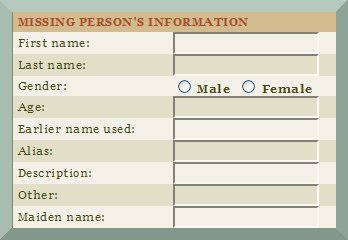 |
Using this search box, I entered the name Patrick O’Brian that returned 452 results. The information returned included:Home County: CorkTownland: Ballydunigan Nr. Bear HavenDeparture date: 1859Port of Departure: England, Liverpool Port of Arrival: MA, Boston |
| Additionally there was a description of the ad placed for him:Any Info Alive Or Dead. Other: Last May (05/65) He Resided W/His Si = Margaret O Brien For About A Mo.; He + His Br. = Denis Started To Mi, Lake Superior + Lived W/Fa + Mo For 6 Yrs; He Got M. About 2 Yrs Ago; Came To Visit His Mo. A Yr Ago Last 4-Jul To Mn Coppermines, Antaugon Co. | |
SEEKING PERSON’S INFORMATION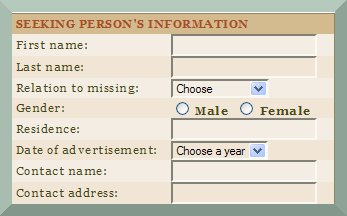 |
The above search also returned the data for the person seeking Mr. O’Brien.Name: Catherine O BrienRelation to missing: MotherGender: FemaleResidence: OH, Youngstown, Mahoning CountyDate of advertisement:08-25-1866 |
POINT OF ORIGIN INFORMATION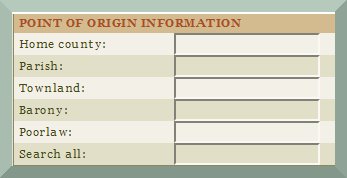 |
The advanced search also lets you search for a person by point of origin.For this search, I used Dublin as my point of origin, which only returned five results. |
WORK HISTORY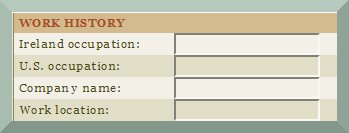 |
If you know your ancestors trade, searching by occupation can give you a wide field of reference.I tried looking for:
|
LOCATION AFTER ARRIVAL |
As many American immigrants first came to North America through Canadian ports, I tried a search for Nova Scotia (A common port of entry for many U.S. immigrants). This search returned 26 results. Under the results was listed Patrick O Donnell, a Shoemaker who after arriving in Nova Scotia travelled to Mo, St. Louis (1859) and ended up in LA, New Orleans |
| The description for Mr. O Donnell reads.M. in Nova Scotia, Halifax (1857); His Wi. = Bridget O Donnell (Borve) in Canada, Quebec Is Anxious To Hear Some Tidings Of Him. Other: Last Heard He Worked at His Trade in LA, New Orleans; At The Time He Left Ns, Halifax He Had A Npw. = John A. Hearns Studying at The Seminary Of Carondolet Nr. Mo, St. Louis | |
TRAVEL INFORMATION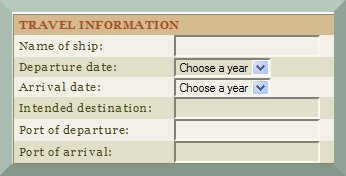 |
Searching by travel information allows you to simply select a year or the intended destination; very handy for researchers who are working with limited information. |
Key Word Search |
The last search field allows you to do a search of the entire database. You can search by name or by keyword. This is very handy should you have an ancestor with an alias or nickname.For example, a search under “Bessy” (short for Elizabeth) returned 55 results including the information for Elizabeth Daily AKA Bessy Daily. |
If you are ready to start searching for your missing ancestor, Boston College searchable database can be found at http://infowanted.bc.edu/.
Before you head off remember to get your Genealogy Beginner family tree charts and research tracking forms available with your 30-day free trial.
